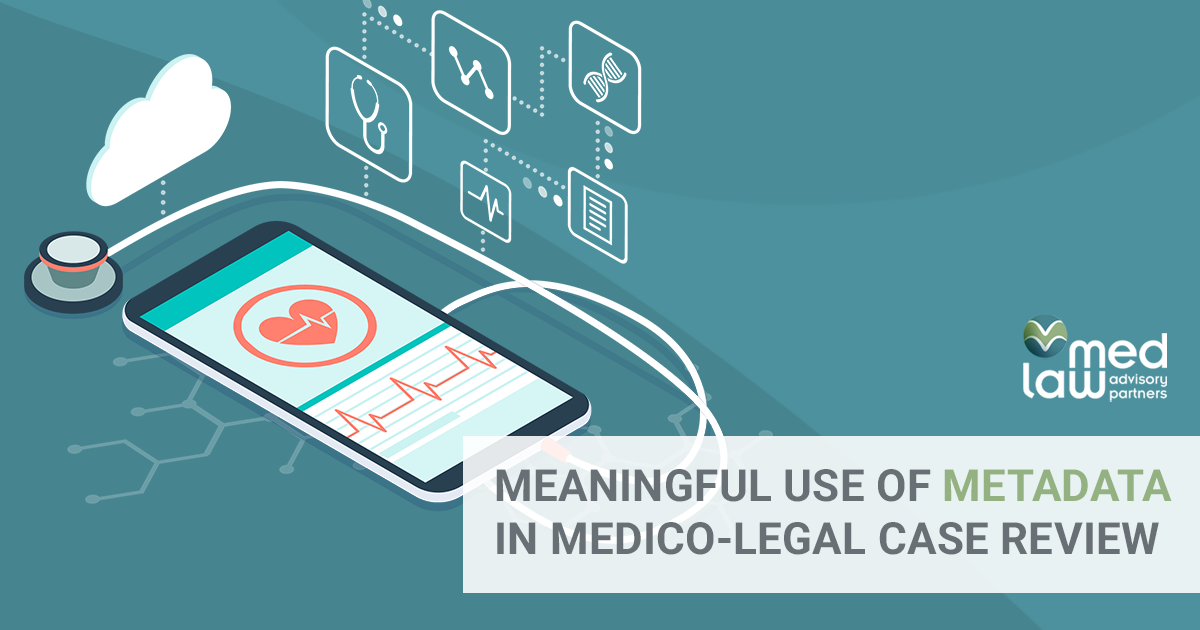Meaningful Use of Metadata in Medico-Legal Case Review

In the past, medical records were written on paper, subject to its associated disadvantages, including the ability to easily change and destroy physical paperwork. Now, medical records are “written” electronically and maintained and retrieved digitally in electronic health records (EHRs). These EHRs contain not only the printed health records but trails of the data entered and hardware and software safeguards in place to prevent manipulation.
With the advent of electronic health records, the information relevant to medical malpractice case reviews is not just included in the patient record. There exist complex trails of information which tell the story of each entry into the electronic health record, including how it was entered, when, and by whom. While the information in the medical record is considered data, the contextual information that helps us understand what that data is, its evolution and all of its iterations over time is metadata.
Essentially, metadata is background explanatory information that tells the digital data story. The metadata details reveal the underlying data’s source, type, owner, and relationships to other data sets in the records. In the case of medical record entries, metadata can reveal precisely when chart entries occurred, who made them, if they were viewed, by whom, and if they were removed or revised, including all versions. Without metadata, the history of electronic data is unknown.
Generally, there are three types of metadata: descriptive, administrative, and structural – but all types, in some critical manner, tell the digital data’s story. The information generated and stored by computer applications, including electronic health record platforms, is complex. Nevertheless, it is extremely important to fully evaluate patient records for medico-legal purposes. The importance of audit trails in electronic health records, thus, cannot be overstated since they may hold the key to evidence of altered records, proof of timing, and other critical information vital to a litigant’s position. The same holds true for computerized information when we looked at evidence of rewritten notes and added or deleted entries. While the data is more complex, the concept remains the same. When analyzing medical records, we must be savvy enough to identify how metadata may be analyzed to support or refute specific allegations. The metadata generated by electronic health record software platforms provides information regarding access and modifications of a specific patient’s electronic health record.
What you see in the printed, electronic health record is not the entirety of the medical record. If you access the metadata and you can determine when data was entered, modified, accessed, or printed, you then have much more information than just what is in the viewable record received in a file or printed. Pieces of the puzzle can be extrapolated from that information based on professional evaluation and practice expertise. The metadata is critical information that Med Law’s team is experienced in reviewing, evaluating, and, most importantly, critically linking to meaningful supporting evidence. Let us discuss with you how metadata may be a critical aspect of case review you may be overlooking.